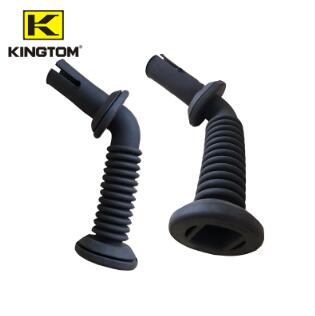Ensuring Quality and Compliance: How Manufacturers Uphold Standards for Flexible Protective Sleeves in Automotive Applications
2024-02-27
Introduction:
Flexible protective sleeves are integral components in automotive engineering, providing vital protection to wiring harnesses against environmental hazards. To ensure the durability and performance of these sleeves in automotive applications, manufacturers adhere to stringent industry standards and quality assurance protocols. In this blog, we explore the meticulous processes and measures employed by manufacturers to guarantee that flexible protective sleeves meet and exceed industry standards for durability and performance.
1. Material Selection:
Manufacturers begin by carefully selecting materials that meet the specific requirements of automotive applications. They prioritize materials with superior mechanical strength, heat resistance, chemical compatibility, and other desired properties. Common materials include polyethylene terephthalate (PET), polyamide (Nylon), polyvinyl chloride (PVC), and thermoplastic elastomers (TPEs), chosen for their ability to withstand the rigors of automotive environments.
2. Design and Engineering:
The design and engineering phase is critical for ensuring that protective sleeves meet industry standards and performance criteria. Manufacturers utilize advanced CAD (Computer-Aided Design) software and simulation tools to develop sleeve designs optimized for durability, flexibility, and ease of installation. Prototyping and testing are conducted to validate design concepts and refine product specifications before mass production.
3. Compliance with Standards:
Manufacturers rigorously adhere to industry standards and regulations governing automotive components and materials. These standards may include ISO (International Organization for Standardization) standards, SAE (Society of Automotive Engineers) specifications, and specific OEM (Original Equipment Manufacturer) requirements. Compliance ensures that protective sleeves meet established benchmarks for performance, safety, and environmental sustainability.
4. Quality Control Processes:
Stringent quality control processes are implemented throughout the manufacturing process to maintain consistency and reliability in flexible protective sleeves. Quality inspections are conducted at various stages, from raw material procurement to final product assembly. This includes dimensional checks, visual inspections, material testing, and performance evaluations to identify and rectify any defects or deviations from specifications.
5. Testing and Validation:
Manufacturers subject flexible protective sleeves to comprehensive testing and validation protocols to assess their durability, performance, and compliance with industry standards. This may involve mechanical tests (e.g., abrasion resistance, tensile strength), environmental tests (e.g., temperature cycling, chemical exposure), and electrical tests (e.g., insulation resistance, dielectric strength). Testing ensures that protective sleeves can withstand the demanding conditions encountered in automotive applications.
6. Continuous Improvement:
Manufacturers are committed to continuous improvement initiatives aimed at enhancing the quality, performance, and reliability of flexible protective sleeves. Feedback from customers, field testing, and advancements in materials and manufacturing technologies drive ongoing refinement and innovation in product design and production processes.
Conclusion:
In conclusion, manufacturers of flexible protective sleeves for automotive applications employ a comprehensive approach to ensure compliance with industry standards and deliver products of the highest quality and performance. By carefully selecting materials, adhering to standards, implementing rigorous quality control processes, conducting thorough testing and validation, and embracing continuous improvement, manufacturers uphold the integrity and reliability of protective sleeves in automotive environments. Automotive professionals can have confidence in the durability and performance of these critical components, contributing to the safety and efficiency of automotive electrical systems.



